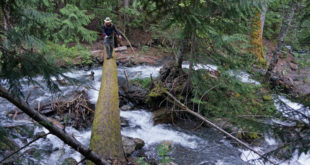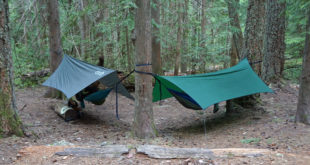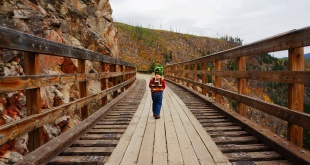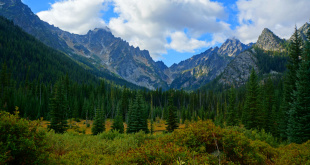Freeze drying or lyophilization now-a-days goes hand in hand with space flight, military and backpackers. We think of modern technology for lightweight and long term storage, but it’s something that has been around for a lot longer than even the USA was a nation.
This technology in its primitive form is both pre-columbian and pre-incan and was used by the aymaran cultures of South America for over 600 years.
Freeze drying preserves food by removing moisture by using a combination of freezeingcold temperatures and heat. The Andean cultures have taken advantage of the cold nights in the mountains and the intense sun to do the same and preserve potatoes to make them last for years.
The process takes several days and is usually done in their winters at high altitude, even today. They head up to the hills and lay out the potatoes on the hard ground. After poking holes in the potatoes to help the moisture escape they let the cold temperature bring the moisture out to the surface and then let the sun let it evaporate. They then employ the most basic of tools, their feet, to help remove remaining moisture and at the same time get rid of the skins. Depending on the type of potato product they want, they can moisten them to produce a white potato (tunto) as opposed to the normal black variety (chuño). The final process is to let them finish drying without skins in the sun.
They then can be stored for long periods of time (some were even found at the pre-incan ruins in Bolivia known as Tiwanaku).
To me, it shows how people of different countries learned to adapt and make use of their environment, and how some of these “New” ideas are actually only slight variations of well proven concepts.
I’ve had the opportunity to both see the process in action in the Andean mountains and taste the rehydrated end result. It’s amazing to see small communities of tents on high mountain passes set up for the drying season and the hillsides covered with potatoes for those few weeks of the year.
They include these potatoes in many traditional dishes and soups. I’ve also had the opportunity to taste them. The locals love them, but let’s just say there has been a lot of progress made with freeze dried meals in the last 50 years in North America.
You can’t help but admire their ingenuity in developing such a simple and effective way to preserve food with little cost. Especially when the modern day equivalent requires a machine that costs tens of thousands of dollars!
 The Outdoor Adventure Giving you tips, tricks & recommendations to help make adventuring in the Outdoors fun, safe & exciting for you and your kids.
The Outdoor Adventure Giving you tips, tricks & recommendations to help make adventuring in the Outdoors fun, safe & exciting for you and your kids.




